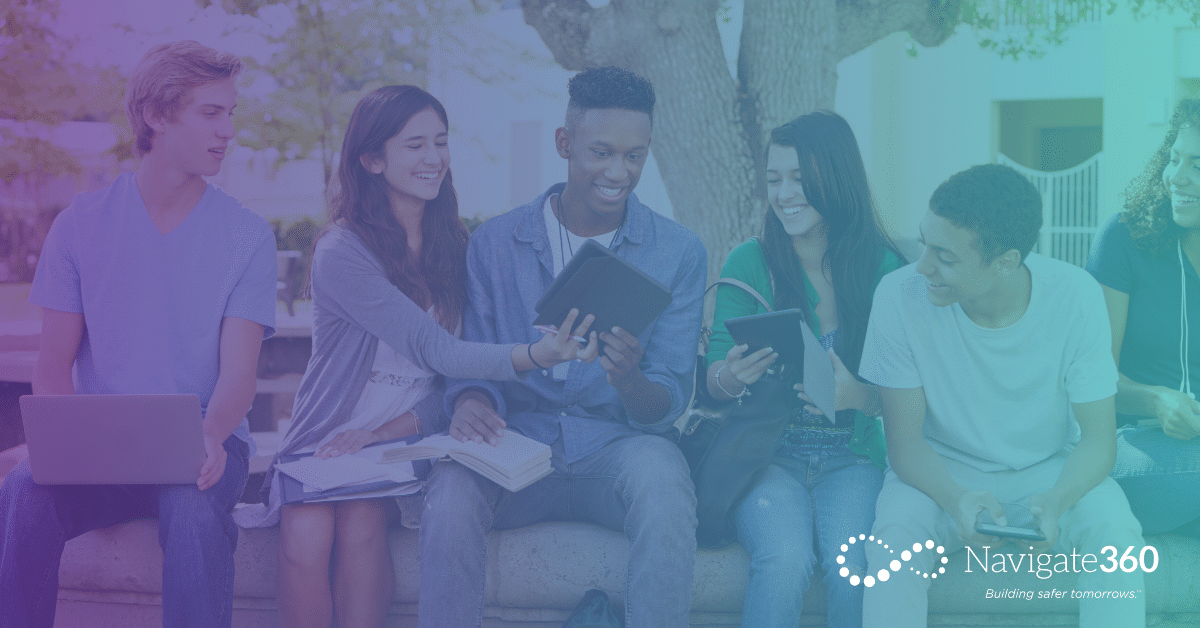Incorporating SEL in Every Classroom Supports Student Success
For students to experience academic achievement, they need an environment focused on social-emotional learning that meets their basic needs. Maslow before Bloom is the idea that children need to feel safe and cared for in order to have the cognitive capacity and emotional & behavioral regulation needed to learn academics. Social-emotional learning (SEL) is the process of honoring this need by teaching students a variety of skill such as social awareness, responsible decision-making and self-management.
The secondary classroom is full of students with a wide range of experiences and needs. Some students will enter your classroom with a strong sense of social and emotional awareness that will help them effectively navigate the demands of school, while others will exhibit behavioral and academic challenges that can often be attributed to a deficit in these skills.
Consistently incorporating SEL programs into your classroom is one of the most effective ways you can even out the playing field between these two groups and ensure that every student who leaves your classroom is prepared to succeed. This doesn’t have to be another source of stress on your already long to-do list. There are many simple ways you can include SEL into your classroom routines and procedures.
Build Social-Emotional Learning into the Fabric of Your Class
Begin the period with a structed brain break. Middle and high school students are juggling a lot. They have a full schedule of classes, each with their own workload and interpersonal experiences, in addition to the extracurriculars they participate in outside of school hours. All of this, combined with the massive development and restructuring happening in their teenage brains, can be incredibly overwhelming.
Beginning your class period with a five- or 10-minute brain break can help them transition between environments, let go of stress or frustration and begin the class feeling mindful and grounded. This time could be used to free-write, listen to a guided meditation, practice breathing exercises or simply dim the lights and let your students enjoy a minute of quiet.
Foster a growth mindset and positive self-talk. Preteens and teenagers are often hard on themselves. Your classroom can be a safe and supportive place where students learn the power of developing more positive habits of mind. Hang posters that feature a growth mindset, write daily affirmations on your board and share them before you begin the day’s work or share stories of your own experiences with overcoming challenges to normalize mistakes and failure as part of the learning process.
Model healthy interpersonal communication and interaction. All teachers know that sometimes students learn best when they don’t realize they’re being taught. Social-emotional learning is no different. Middle and high school students are experiencing huge transitions in the way they interact with and are perceived by the world around them.
The way you treat them in your classroom can teach them relationships skills that they will carry forward into adult life. Take time to greet your students at the door, ask questions and listen intently to their answers, offer sincere encouragement and support when it’s clear they’re having a bad day. Show them the respect you hope to see them offer to others.
Assign long-term projects to develop executive functioning skills. The best learning environment is one that pushes students to plan, organize, manage their time and problem-solve. An integral part of education is moving beyond surface-level knowledge and equipping students with the skills they’ll need once they leave school.
Challenging your students to a quarter- or semester-long project will allow them to apply many higher-order thinking skills required not only throughout their school career, but also in their personal lives and the workplace once they graduate. As they complete each stage of the project, their motivation and confidence will build as well.
Have students set SMART goals. SMART goals are specific, measurable, achievable, realistic and timely. Helping your students set and track SMART goals is valuable, because it teaches them a process for increasing the likelihood of reaching their target. The pressure on secondary students to get good grades, excel at extracurriculars, fit in socially and prepare for their future can create anxiety and stress. Having a concrete process for planning out their goals and developing action steps is a way to ease some of that stress.
SMART goals will give them specific objectives to work toward with your guidance and encouragement. Schedule regular check-ins to keep students on track. Celebrate each stage of accomplishment. Once their goals are met, help them raise the bar for their next set of SMART goals. Setting SMART goals is a strategy that can be utilized across many settings throughout their lives for both short- and long-term goals.
Equip Your Students for Wellness & Success with Social-Emotional Learning
Teaching in a secondary classroom is a complicated job, but incorporating social-emotional learning into your pedagogy and classroom management doesn’t have to be. Implementing these practices can have endless benefits, including enhancing your relationship with students, improving their self-esteem and reducing stress levels for everyone in the classroom.
It can be a challenge to get middle and high school students to take social-emotional learning seriously, but that doesn’t mean it should be forsaken in secondary classrooms. These methods can improve student mental health, relationship skills, academic achievement and more.
To learn more about implementing SEL in your classroom, contact us today.




